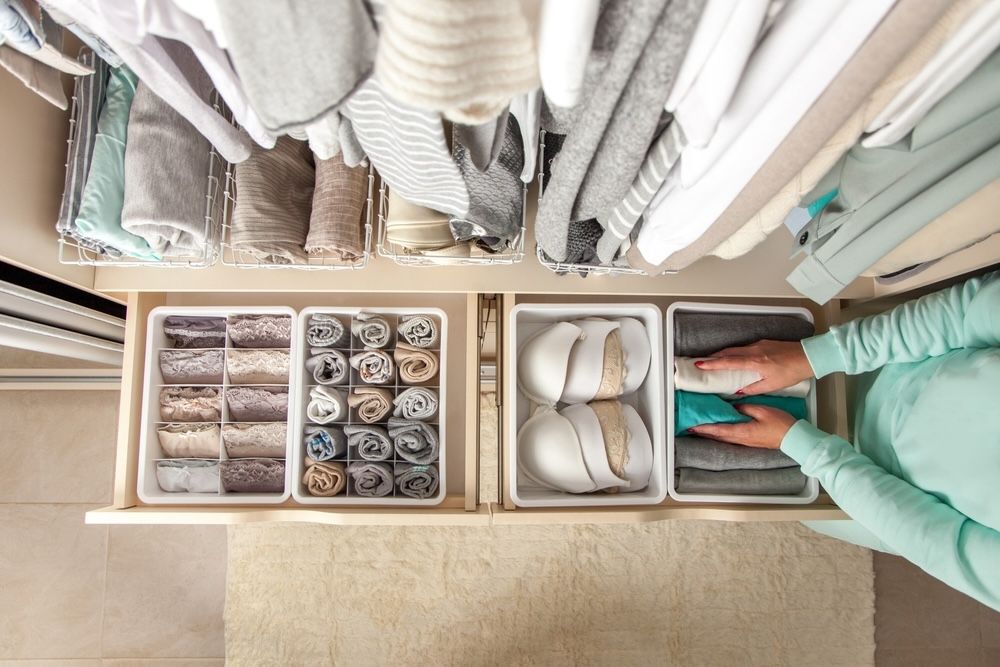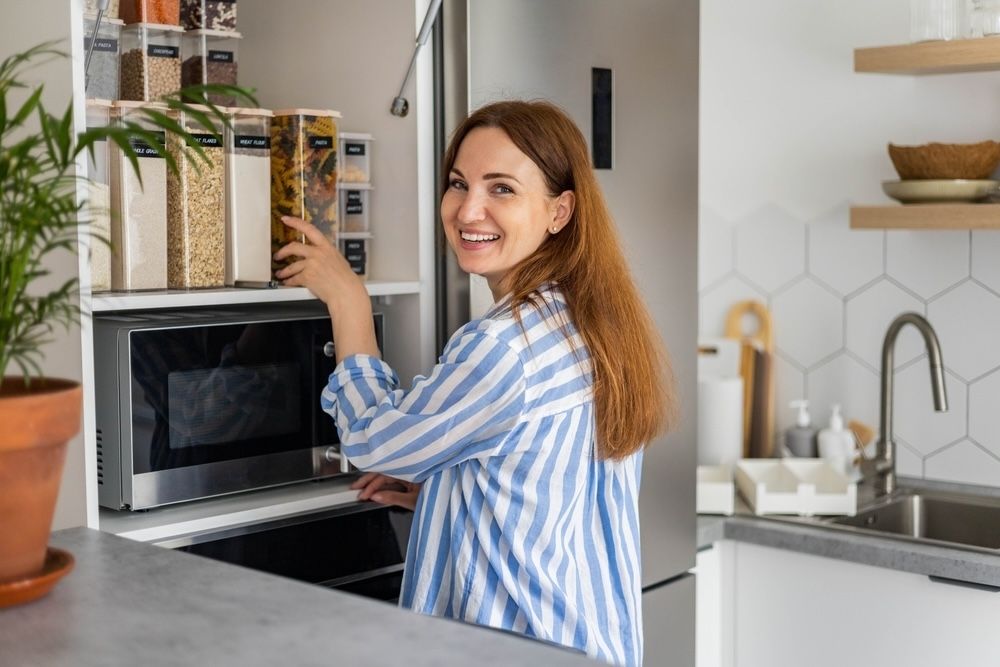The KonMari Method: Decluttering Your Home for Joy and Efficiency

The KonMari Method, developed by the renowned organizing consultant Marie Kondo, has taken the world by storm with its unique approach to decluttering and organizing homes. This revolutionary method focuses not only on the physical act of tidying up but also on fostering a deeper connection with the items we choose to keep in our living spaces. By emphasizing the importance of retaining items that "spark joy" and discarding those that do not, the KonMari Method encourages a more mindful and intentional approach to our possessions. In this detailed guide, we will explore the principles and steps of the KonMari Method, providing you with the tools to transform your home into a haven of joy and efficiency.
What is the KonMari Method?
The KonMari Method stands out from other decluttering techniques due to its emphasis on mindfulness, introspection, and the emotional value of items. Unlike traditional decluttering methods that often focus on quick fixes or surface-level tidying, the KonMari Method promotes a comprehensive and lasting transformation. This method encourages individuals to engage with their possessions on a deeper level, reflecting on the significance and joy each item brings to their lives. By following a specific sequence and adopting a mindset of gratitude and respect, the KonMari Method not only helps to create an organized home but also fosters a more intentional and joyful lifestyle.
The Six Basic Rules of the KonMari Method
1. Commit Yourself to Tidying Up
The KonMari Method requires a genuine commitment to the process of tidying up. Unlike quick or superficial cleaning sessions, this method involves a thorough and comprehensive decluttering event. By dedicating a significant amount of time and energy, you ensure that the transformation is both effective and lasting. Approach this process with determination, recognizing that the effort you invest now will result in a more harmonious and joyful living environment.
2. Imagine Your Ideal Lifestyle
Visualization is a powerful tool in the KonMari Method. Before you begin decluttering, take the time to imagine your ideal lifestyle and the type of home that supports it. Envision a space that reflects your values, goals, and aspirations. This vision will serve as a guiding principle throughout the decluttering process, helping you make decisions that align with your ideal life. By keeping this vision in mind, you can create a home that truly supports and enhances your well-being.
3. Finish Discarding First
One of the key principles of the KonMari Method is to focus on discarding items before organizing them. This ensures that you only keep items that bring you joy and have a meaningful place in your life. Begin by going through each category and identifying items that no longer serve you or spark joy. By letting go of these items, you create space for those that truly matter. This approach prevents unnecessary clutter and allows for a more streamlined and intentional organization process.

4. Tidy by Category, Not Location
The KonMari Method advocates for organizing items by category rather than by location. This approach prevents scattered tidying and ensures that every item is thoroughly evaluated. By gathering all items of a specific category in one place, you gain a comprehensive view of what you own and can make more informed decisions. This method also helps to avoid duplications and encourages a more holistic approach to decluttering.

5. Follow the Right Order
The recommended sequence in the KonMari Method is crucial for building decision-making skills and confidence. Start with easier categories, such as clothes, and gradually move on to more challenging ones, such as sentimental items. This progression allows you to hone your ability to discern what sparks joy and to build momentum as you tackle each category. By following this order, you develop a deeper understanding of your relationship with your possessions and gain the skills needed to maintain an organized home.
6. Ask Yourself If It Sparks Joy
At the heart of the KonMari Method is the question: Does this item spark joy? As you handle each item, pay close attention to your emotional response. Items that bring you joy will elicit a sense of happiness and positivity. Keep these items and express gratitude for their presence in your life. For items that do not spark joy, thank them for their service and let them go. This practice fosters a sense of mindfulness and appreciation for your belongings and helps you create a home filled with joy and positivity.
Step-by-Step Guide to the KonMari Method
1. Clothes
The first category to tackle in the KonMari Method is clothing. Start by gathering all your clothes from every part of your home, including closets, drawers, and storage spaces. Create a pile of all your clothing items to see the full extent of what you own. Next, handle each piece of clothing individually and ask yourself if it sparks joy. Pay attention to how each item makes you feel and whether it aligns with your ideal lifestyle. Keep only those items that bring you a sense of joy and gratitude. For the items that do not, thank them for their service and discard them responsibly. Once you have completed the decluttering process, fold your clothes neatly and store them upright in drawers or on shelves. This method not only maximizes space but also allows you to see and access your clothing more easily.

2. Books
Books hold a special place in many people’s hearts, and the KonMari Method treats them with the respect they deserve. Start by gathering all your books in one place, including those stored on shelves, in drawers, or scattered around the house. Create a stack and go through each book one by one, asking yourself if it sparks joy. Consider the emotional response each book elicits and whether it aligns with your current interests and goals. Keep only those books that inspire and bring you joy. For books that no longer serve a purpose, thank them for their contribution and donate or sell them. Organize your remaining books in a way that makes them easily accessible and visually appealing. This method not only declutters your collection but also creates a more meaningful and intentional library.
3. Papers
The paper category includes documents, bills, letters, and manuals that often accumulate over time. Start by gathering all your papers in one place and sorting them into subcategories such as financial documents, personal letters, and miscellaneous papers. Go through each subcategory and decide which papers are essential and bring you joy. Discard any unnecessary or outdated documents, and organize the remaining ones in labeled folders or files for easy access. This process not only reduces clutter but also ensures that important documents are readily available when needed. By maintaining a streamlined and organized paper system, you can eliminate the stress and frustration of dealing with paper clutter.
4. Komono (Miscellaneous Items)
Komono, or miscellaneous items, cover a wide range of household belongings, from kitchenware to electronics and toiletries. Start by dividing komono into subcategories and tackle each one separately. For example, begin with kitchen items, then move on to electronics, and finally address toiletries and other miscellaneous items. Apply the same joy-checking principle to each item, keeping only those that bring you joy and serve a purpose in your life. For items that do not spark joy, thank them for their service and discard or donate them. Organize the remaining items in a way that maximizes space and enhances functionality. This process not only declutters your home but also creates a more efficient and enjoyable living environment.

5. Sentimental Items
Sentimental items are often the most challenging category to declutter, as they hold significant emotional value. Save this category for last, as you will have developed stronger decision-making skills and confidence by this point. Start by gathering all sentimental items in one place and take the time to reflect on each one. Consider the memories and emotions associated with each item and whether it brings you joy. Keep only those items that truly resonate with you and enhance your sense of well-being. For items that no longer serve a purpose, express gratitude for the memories they represent and let them go. Store your sentimental items in a way that honors their significance, such as in a special box or display area. This approach not only preserves your most cherished memories but also creates a more intentional and joyful living space.
Benefits of the KonMari Method
Emotional Clarity: The KonMari Method helps you gain a clearer understanding of what truly matters to you. By focusing on items that spark joy, you develop a deeper connection with your possessions and a greater sense of emotional clarity. This process encourages you to let go of items that no longer serve a purpose and to surround yourself with those that enhance your well-being.
Efficient Living: An organized home leads to more efficient daily routines and increased productivity. By decluttering and organizing your space, you create a more functional environment that supports your lifestyle and goals. This efficiency extends beyond your physical space to your mental and emotional well-being, allowing you to focus on what truly matters.
Sustained Tidiness: The KonMari Method promotes habits that maintain order and prevent future clutter. By adopting a mindful and intentional approach to your possessions, you develop habits that keep your home tidy and organized. This sustained tidiness not only reduces stress but also enhances your overall quality of life.
Enhanced Joy: Surrounding yourself with items that bring joy fosters a positive and uplifting living environment. The KonMari Method encourages you to prioritize joy and gratitude in your life, leading to a more fulfilling and joyful existence. By keeping only those items that spark joy, you create a home that reflects your true self and supports your happiness and well-being.

Conclusion
The KonMari Method is more than just a decluttering technique; it is a transformative approach to living that fosters joy, mindfulness, and efficiency. By following the principles and steps outlined in this guide, you can create a home that is not only organized but also filled with items that bring you joy and enhance your well-being. Embrace the KonMari Method today and experience the profound benefits of a joyful and efficient living space.
Check more articles on our blog

Simple and Easy Hacks on How to Organize Home Office

4 Stressful Things in the Bedroom That Hinder Your Sleep

Mastering the Art of Seasonal Decluttering
